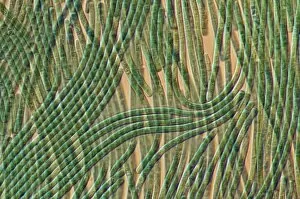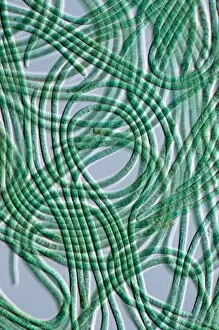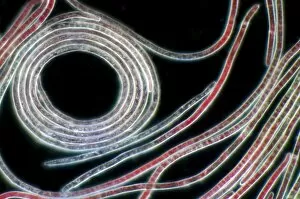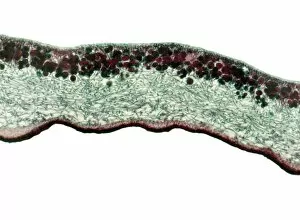Blue Green Alga Collection
"Exploring the Intriguing World of Blue-Green Algae
All Professionally Made to Order for Quick Shipping
"Exploring the Intriguing World of Blue-Green Algae: From Vibrant Cyanobacteria in the Sargasso Sea to Troublesome Encounters in Lake Baikal" Diving into the depths of our oceans, we encounter a fascinating organism known as blue-green algae. Found in various forms and locations, these cyanobacteria offer both awe-inspiring beauty and concerning implications. In the vast expanse of the Sargasso Sea near Bermuda, Trichodesmium thiebautii reigns supreme. This vibrant blue-green alga creates stunning blooms that paint the ocean's surface with an ethereal hue. Its presence not only captivates marine enthusiasts but also plays a crucial role in nitrogen fixation, contributing to global nutrient cycles. However, not all encounters with blue-green algae are as enchanting. In Siberia's Lake Baikal during December, a sick sponge falls victim to a harmful strain of cyanobacteria. The once thriving ecosystem now suffers from this unwelcome intruder's devastating effects. Through microscopic lenses, we delve deeper into understanding specific species like Oscillatoria cyanobacteria. Captured through PC images or dark field LM techniques, their intricate structures become visible to us. These resilient organisms can survive diverse conditions and adapt to different environments worldwide. Yet again, Oscillatoria cyanobacteria make their appearance through DIC imaging – showcasing their distinctive features under polarized light microscopy. Their ability to thrive even in challenging circumstances highlights their resilience and evolutionary success. Not limited solely to Oscillatoria species is Gloeotrichia cyanobacteria – another noteworthy member of this diverse group. With its unique filamentous structure and characteristic greenish coloration, it adds yet another dimension to our exploration of blue-green algae. Finally, let us marvel at stromatolites – ancient formations created by layers upon layers of microbial mats predominantly composed of cyanobacteria like those mentioned before.








